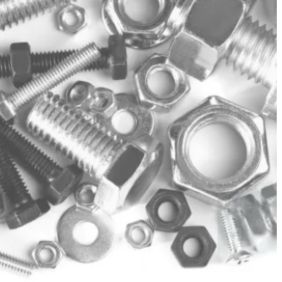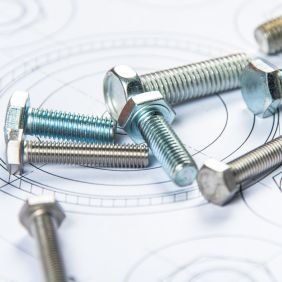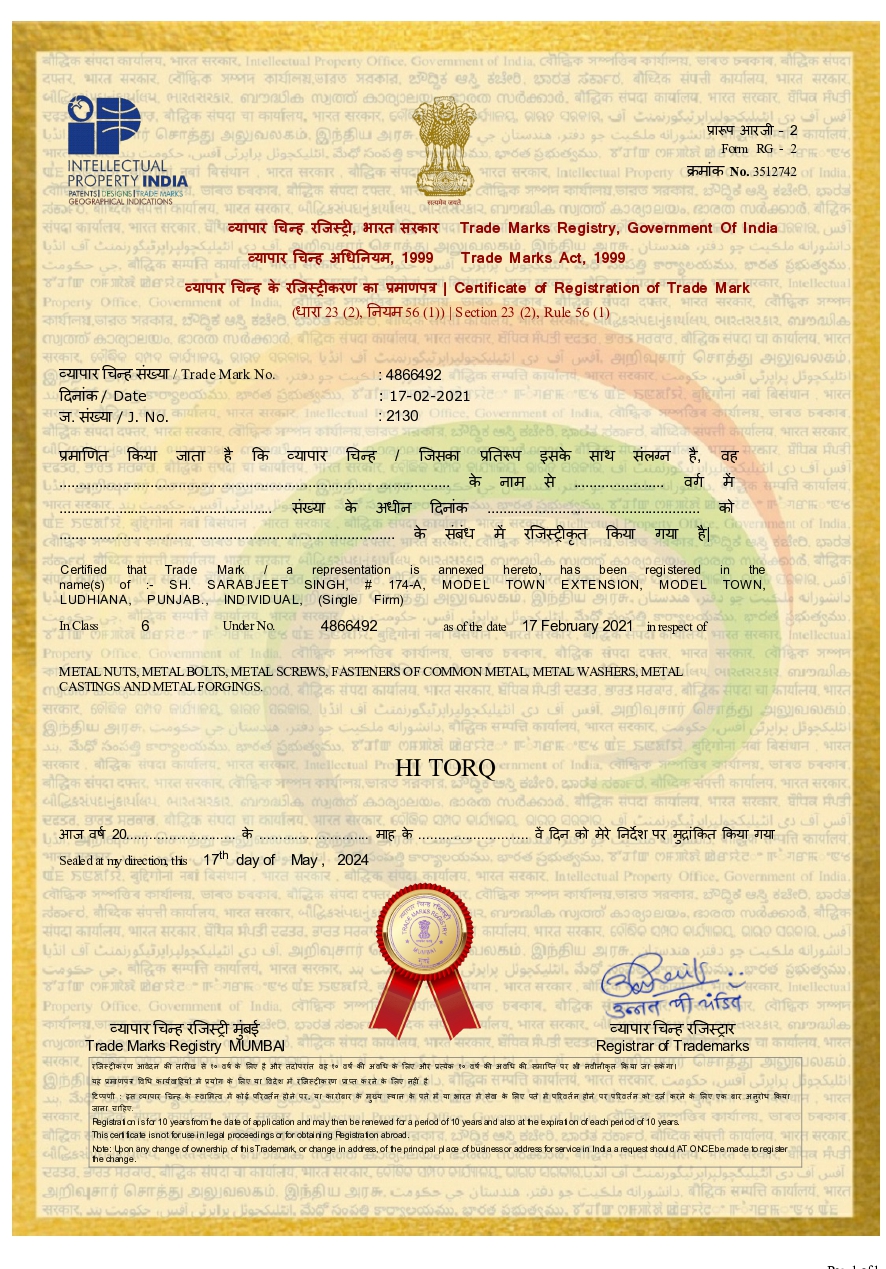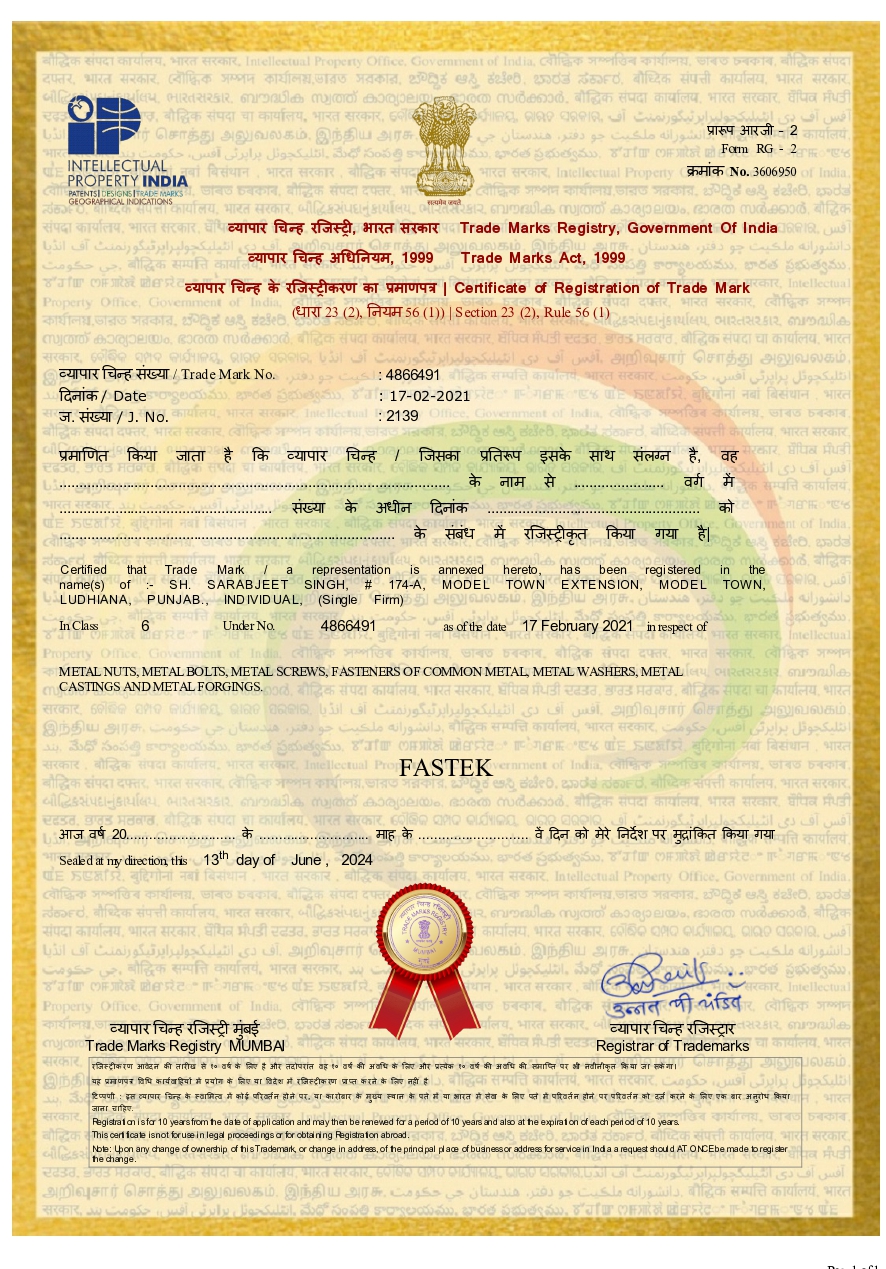✅ Introduction
When it comes to high tensile bolt manufacturing, heat treatment is not just a step—it’s the heart of the process. This essential technique transforms ordinary steel into high-performance fasteners capable of withstanding extreme loads, stress, and wear.
In this blog, we’ll explain what heat treatment is, how it affects bolt strength, and why it’s crucial for industrial applications ranging from construction and automotive to energy and heavy engineering.
🔍 What Is Heat Treatment?
Heat treatment is a controlled process of heating and cooling metals to change their mechanical properties—such as hardness, tensile strength, ductility, and toughness—without altering their shape.
In high tensile bolt manufacturing, this process generally includes:
1. Hardening (Quenching)
-
The bolt is heated to around 850–900°C.
-
It is then rapidly cooled in oil or water, forming a hard, martensitic structure.
2. Tempering
-
The bolt is reheated to 200–650°C and cooled slowly.
-
This reduces brittleness and improves toughness and ductility.
3. Stress Relieving or Normalizing
-
Helps reduce internal stress and improves dimensional stability and grain refinement.
🛠️ Why Heat Treatment Matters
🔹 1. Enhances Tensile & Yield Strength
Heat-treated bolts achieve significantly higher tensile and yield strength, making them suitable for critical load-bearing applications like bridges, towers, and structural joints.
🔹 2. Improves Fatigue and Impact Resistance
Tempering improves resistance to vibration, shock, and cyclic loading, reducing the risk of fatigue failure in dynamic applications.
🔹 3. Increases Wear Resistance
Quenched and tempered bolts exhibit better surface hardness, reducing wear in high-friction environments.
🔹 4. Ensures Uniform Quality
Proper heat treatment ensures that mechanical properties remain consistent across production batches—crucial for OEMs and large-scale infrastructure projects.
📊 Comparison: Pre-Treated vs. Heat-Treated Bolts
| Property | Untreated Steel Bolt | Heat-Treated High Tensile Bolt |
|---|---|---|
| Tensile Strength | ~400 MPa | Up to 1200 MPa |
| Ductility | High (but soft) | Moderate (with toughness) |
| Fatigue Resistance | Low | High |
| Wear Resistance | Low | High |
| Application Use | Light-duty | Heavy-duty / Critical use |
🏗️ Common Use Cases
-
Grade 8.8 Bolts – General construction and mechanical assemblies
-
Grade 10.9 Bolts – Automotive, industrial machines, high-vibration areas
-
Grade 12.9 Bolts – Aerospace, motorsport, robotics, and precision tools
All these bolts undergo controlled heat treatment to meet ISO 898-1 and ASTM standards.
❌ What Happens Without Heat Treatment?
-
Bolts may deform or stretch under load
-
Brittle bolts may crack or snap, causing structural failure
-
Uneven performance across fasteners increases safety risks
-
Poor fatigue life leads to frequent replacements
Simply put, skipping heat treatment is not an option for serious engineering applications.
🏁 Final Thoughts
Heat treatment is what makes a bolt “high tensile.” It’s the reason these fasteners can bear massive loads, resist fatigue, and last for years under tough conditions. As industries demand higher performance, the quality of heat treatment becomes a make-or-break factor.
🔧 Partner with Experts in High Tensile Fasteners
At National Fasteners, we specialize in manufacturing heat-treated high tensile nuts and bolts for heavy industry, infrastructure, and OEM applications. Our in-house heat treatment process ensures every bolt meets international strength and quality standards.
📞 Contact us today for customized solutions or bulk orders.
📧 Email: sales@nationalfasteners.in | 🌐 Website: www.nationalfasteners.in





